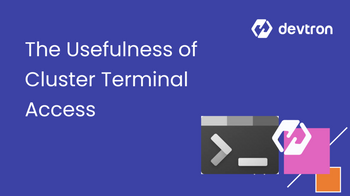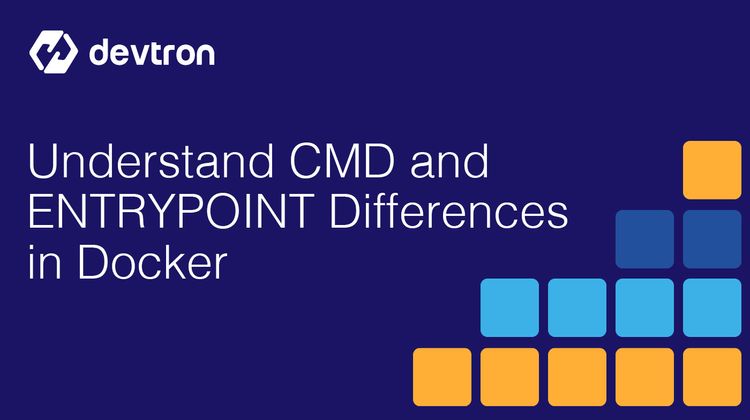As application teams start addressing complex end-user requirements, the infrastructure to support them also gets complex. Add scalability to the mix, and things are further complicated. Continuous Integration (CI) can address these issues happening before, during, and post-build in a software delivery lifecycle. Continuous Delivery (CD) can address issues before, during, and post-deployment.
Developers contribute in creating a pipeline to build and deploy applications iteratively. Together with DevOps engineers, they build pipelines that would automate the process of CI and CD by stitching the right tools. Most widely used CI and CD tools use a ton of CLI commands and/or scripts to build a pipeline. For developers to adopt CI and CD and be part of creating and leveraging a pipeline, burdens them with an additional learning curve.
As the number of services provided by Platform as a Service (PaaS) and Infrastructure-as-aService (IaaS) providers increase, the risk of lock-in with these providers increases for start-ups and enterprises. Enterprises prefer to keep their options open by using multiple service providers right from the start. This is where containers and Kubernetes (k8s) come in, they together provide the flexibility of moving their apps from one provider to another. While there are significant benefits in using containers, DevOps, and k8s, they increase the learning curve for the whole team.
In addition, the complexity is bound to increase if an organization has to scale CI/CD across different teams. There is no standardization if the teams operate in silos. The degree of difficulty increases even further if you are hiring to scale a DevOps team. Skilled resources are hard to get. However, from a business perspective, the application teams’ demands must be met to support local or global requirements.
Now, with all these complexities and using newer technologies, developers have started forming their own opinions to run the system how they deem fit. For a smaller or R&D type of project, running the system with their opinions might be okay, but in the long run, it won’t work. People may leave, and parameters around applications may change. When the team scales and/or more applications have to be brought under the umbrella of DevOps, multiple opinions need to be addressed and scaled.
So, there is a need for a tool that would enable teams to drive systems as per their opinions, yet enable them to bring uniformity and scale when the time comes.
This is where Devtron comes in.
A developer or its team, which is starting to explore DevOps, needs a tool that would significantly shorten the learning curve. By providing ready-to-use templates and guided workflows, the team should be able to scale their CI/CD initiatives as they hire more staff.
As the maturity of DevOps adoption increases in an organization, the teams would need an Internal Development Platform (IDP) and platform engineering to bring uniformity and scalability simultaneously. It would be a self-service model that makes things easier for different teams. This is where, again, Devtron can be used.
So, Devtron.ai supports a novice user and, at the same time, addresses the other end of the spectrum i.e., IDP. Devtron, as a platform, enables first time users and, as they mature and scale, continues to be their internal development platform.
I am saving the best part for the last – Devtron is an open-source platform with a vibrant community. It can be deployed on-premise or on a cloud of your choice. Organizations needing ongoing support, may subscribe to their Enterprise support package. To know more, reach out to contact@devtron.ai
FAQ
How does Devtron simplify Continuous Integration (CI) and Continuous Delivery (CD) for developers?
Devtron simplifies CI/CD by providing ready-to-use templates and guided workflows that help developers quickly adopt and scale their CI/CD pipelines without needing to master complex CLI commands or scripts.
Why is Kubernetes and containerization important for scaling CI/CD pipelines?
Kubernetes and containers provide flexibility by allowing applications to move seamlessly across different cloud service providers, eliminating vendor lock-in. This flexibility makes it easier to scale CI/CD pipelines across multiple teams and platforms.
What challenges do organizations face when scaling CI/CD across teams, and how does Devtron address them?
As organizations scale, the lack of standardization and increased complexity in managing multiple teams can hinder CI/CD adoption. Devtron solves this by offering an Internal Development Platform (IDP) that enables uniformity and scalability while simplifying DevOps workflows.
How does Devtron help businesses at different stages of DevOps maturity?
Devtron supports teams at any stage of their DevOps journey, from novice users needing quick adoption tools to advanced organizations looking for a scalable and standardized IDP. As DevOps maturity increases, Devtron adapts, providing a platform that evolves with the business’s needs.









